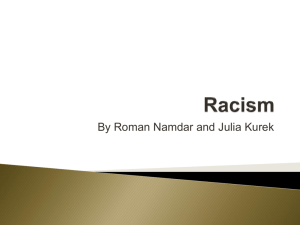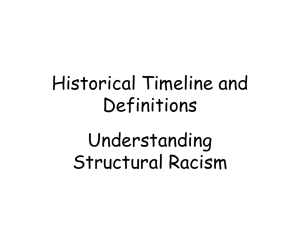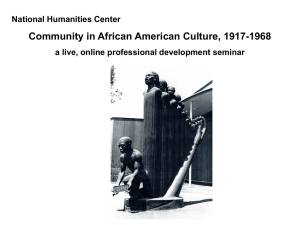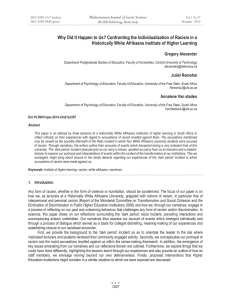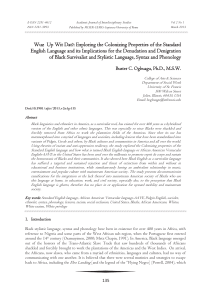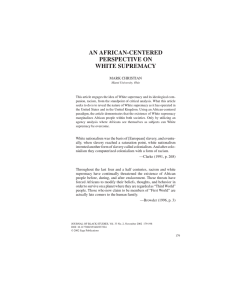Study Guide: Midterm for HIST 73. Identification: for multiple
advertisement
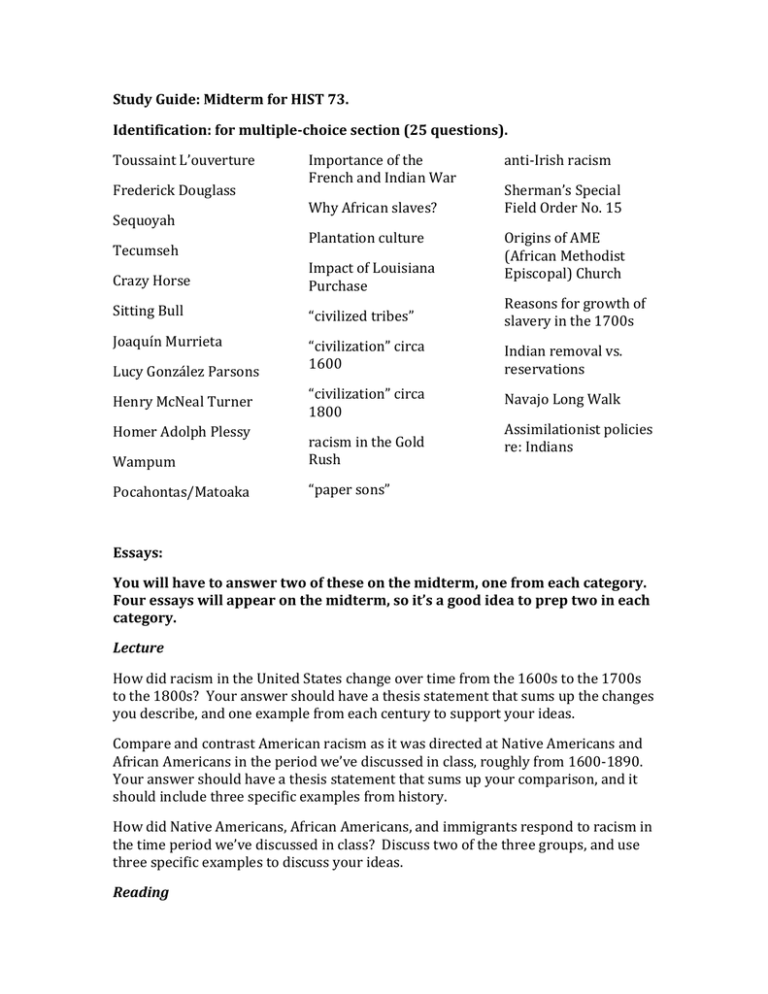
Study Guide: Midterm for HIST 73. Identification: for multiple-choice section (25 questions). Toussaint L’ouverture Frederick Douglass Sequoyah Tecumseh Importance of the French and Indian War Why African slaves? Plantation culture anti-Irish racism Sherman’s Special Field Order No. 15 Origins of AME (African Methodist Episcopal) Church Crazy Horse Impact of Louisiana Purchase Sitting Bull “civilized tribes” Reasons for growth of slavery in the 1700s Joaquín Murrieta “civilization” circa 1600 Indian removal vs. reservations “civilization” circa 1800 Navajo Long Walk Lucy González Parsons Henry McNeal Turner Homer Adolph Plessy Wampum racism in the Gold Rush Pocahontas/Matoaka “paper sons” Assimilationist policies re: Indians Essays: You will have to answer two of these on the midterm, one from each category. Four essays will appear on the midterm, so it’s a good idea to prep two in each category. Lecture How did racism in the United States change over time from the 1600s to the 1700s to the 1800s? Your answer should have a thesis statement that sums up the changes you describe, and one example from each century to support your ideas. Compare and contrast American racism as it was directed at Native Americans and African Americans in the period we’ve discussed in class, roughly from 1600-1890. Your answer should have a thesis statement that sums up your comparison, and it should include three specific examples from history. How did Native Americans, African Americans, and immigrants respond to racism in the time period we’ve discussed in class? Discuss two of the three groups, and use three specific examples to discuss your ideas. Reading Compare and contrast two of the readings we’ve discussed in class. Discuss: how did each view him or herself in relationship to white people? How did each fight against racism in the ordinary and extraordinary actions of their lives? Use at least three specific examples to support your ideas. How do women’s stories differ from men’s stories? Think: Was there anything that the women’s stories we read in class shared (Mary Rowlandson, Harriet Jacobs, Tempe Herndon Durham, and Ms. Holmes)? Were there commonalities in the stories by and about the men (John Ross in the story about the Trail of Tears, Geronimo, or Fong See in Lisa See’s story)? What conclusions can we draw about race and gender in early American history? What are the limits to what we can say? Use an example from three different course readings. How was violence and the law used as a weapon to enforce racial boundaries in early American history? Explain, using three examples from the reading we’ve done for class so far.

